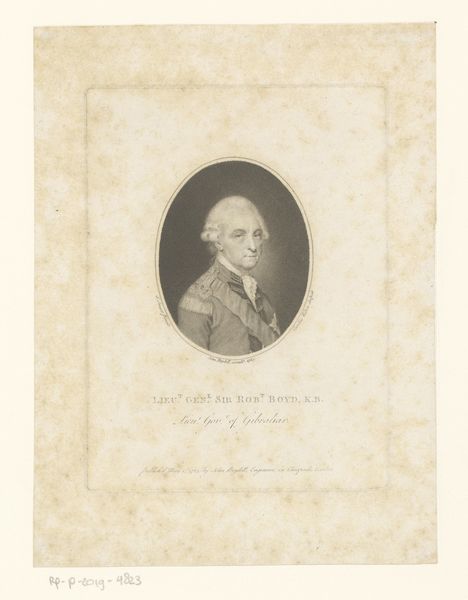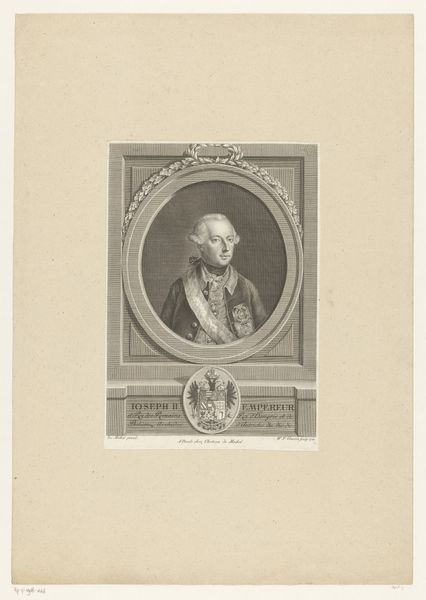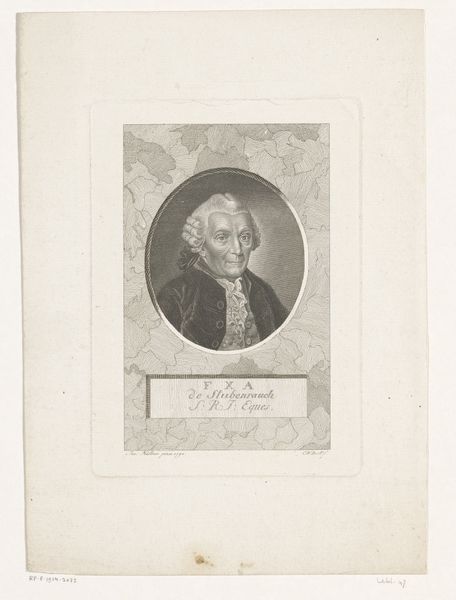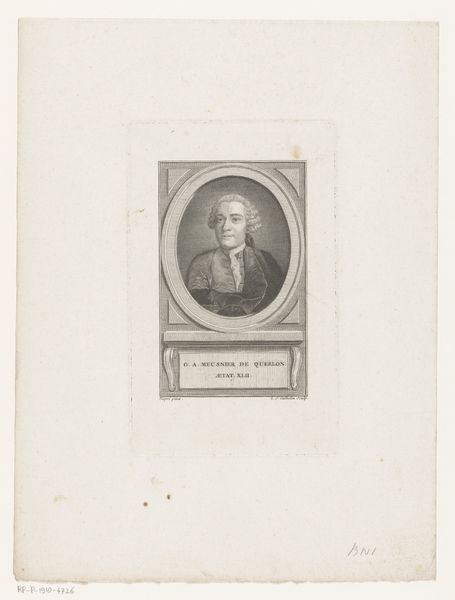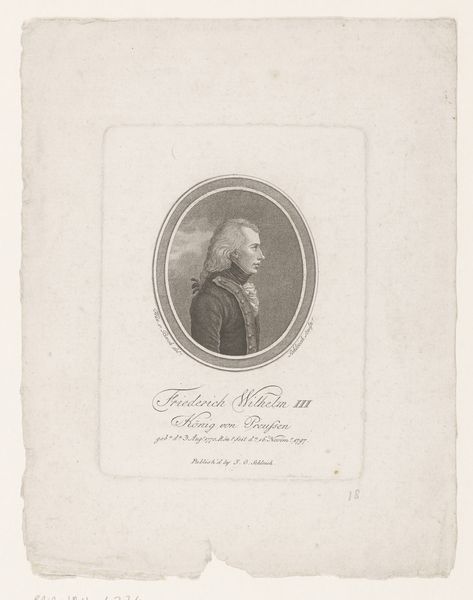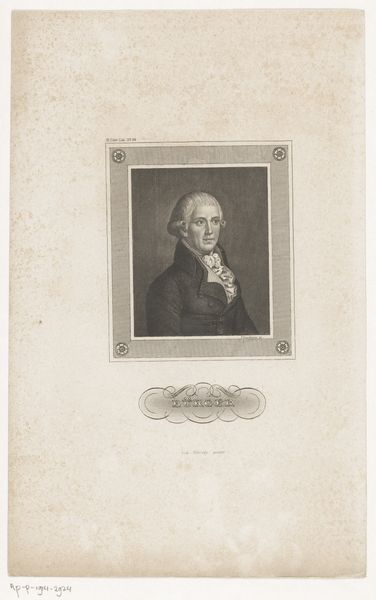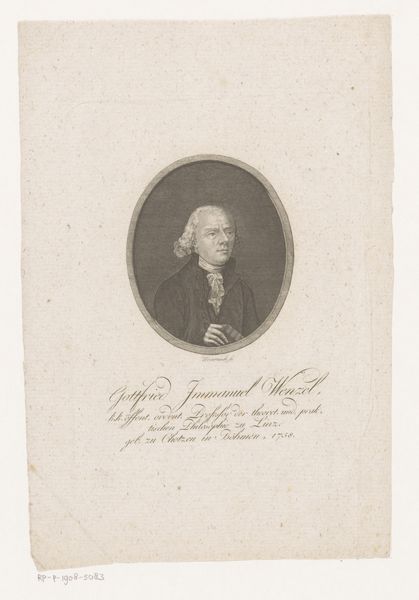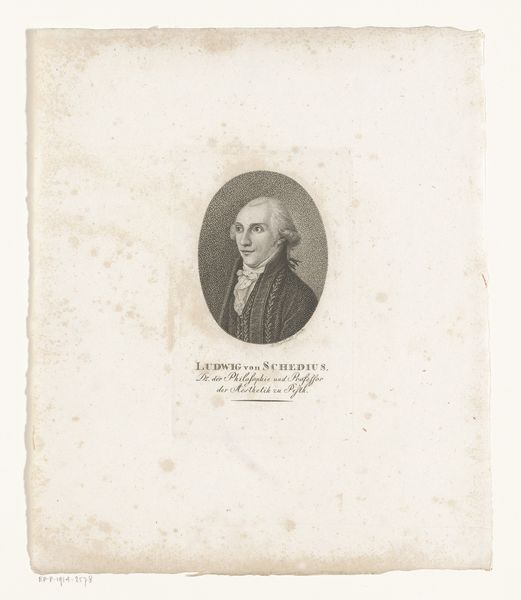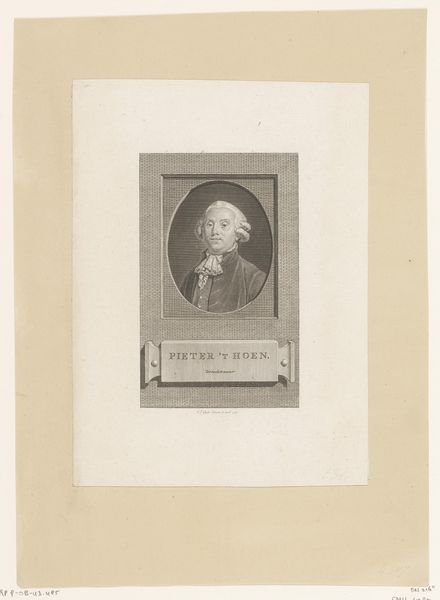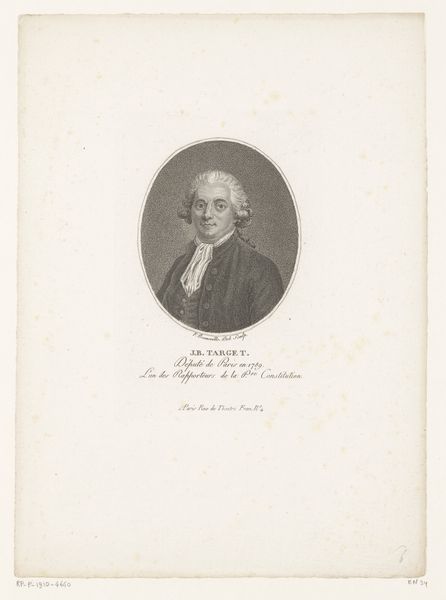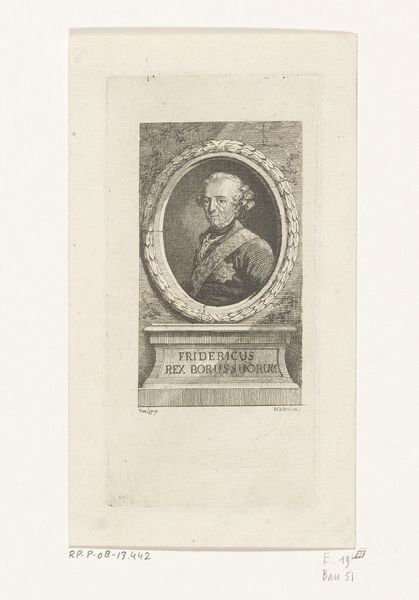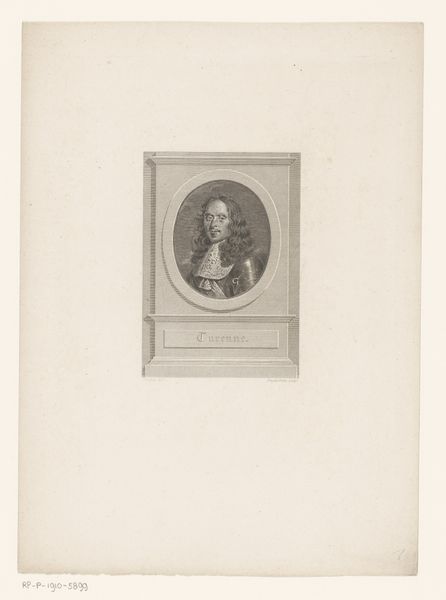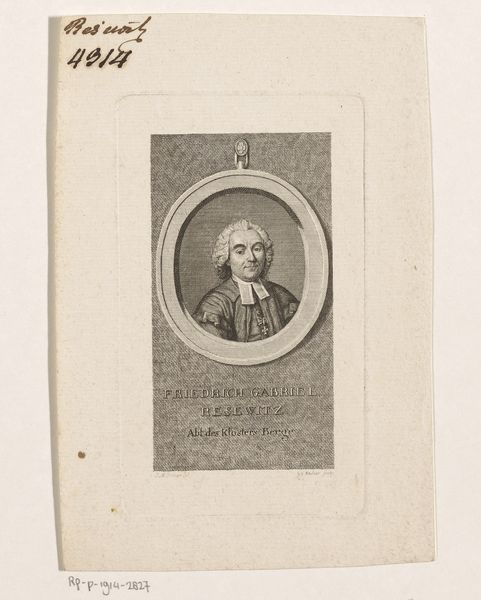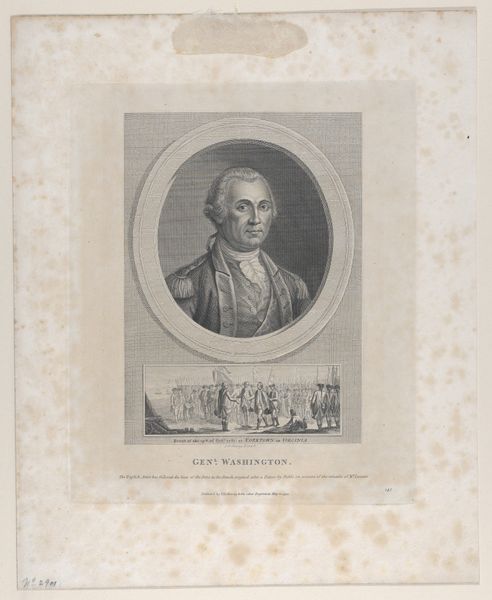
engraving
#
portrait
#
neoclacissism
#
history-painting
#
academic-art
#
engraving
Dimensions: height 222 mm, width 146 mm
Copyright: Rijks Museum: Open Domain
Curator: Let's delve into this stately portrait of Georges-Louis Leclerc, Comte de Buffon. Edme Bovinet created this engraving sometime between 1777 and 1832. It's quite striking. What are your initial thoughts? Editor: Stark! The linear precision creates a rather clinical detachment, wouldn't you say? It feels like a taxonomic record, the way the material rendering focuses attention. Curator: In a way, it is. Buffon was a renowned naturalist and this portrait encapsulates the Neoclassical fascination with reason and order. Considering his contributions to science, situating humans within nature, it suggests Enlightenment ideals of objective observation and classification. It reflects, I think, how the era framed its intellectual leaders. Editor: Precisely. And engraving as a medium mirrors this drive. The process is meticulous and repeatable, aligning with early industrial principles. Look at the etched lines defining his face – there's a kind of standardized rendering, reducing him almost to data. Think of the division of labor in print shops; each hand contributing to the mechanical reproduction of the image. Curator: An intriguing parallel! The proliferation of such images definitely played a role in constructing Buffon’s public persona, his identity shaped by printed matter. His role as a naturalist directly challenges previous frameworks that positioned humans at the very center of the universe and thought, right? He had very unique beliefs about historical materialism! Editor: Agreed. Notice how the engraver painstakingly conveys the texture of his coat, his lace, and the metal of his decorations. It's almost an obsession with tangible things, emphasizing wealth and status via commodities. Curator: Beyond wealth, it hints at the values that French aristocracy connected to that status. I see how that would mirror the era. Editor: It certainly pushes us to consider art as work, an output embedded in specific social and economic relations, wouldn't you say? It makes one reconsider who this portrait serves! Curator: True, by examining his portrait within that context, we question not only his identity but also how power is manifested through material representations. Thanks, that's a viewpoint I'll continue to think about. Editor: Absolutely. Examining its process reveals that it is also about making, consumption, and the society that makes these items valuable to us!
Comments
No comments
Be the first to comment and join the conversation on the ultimate creative platform.
